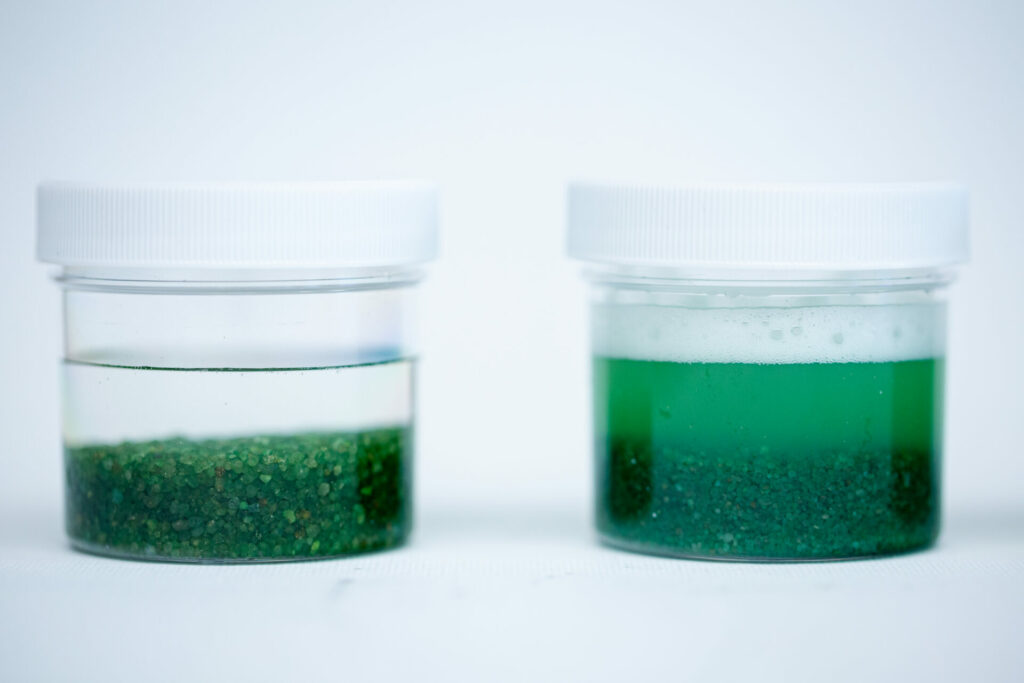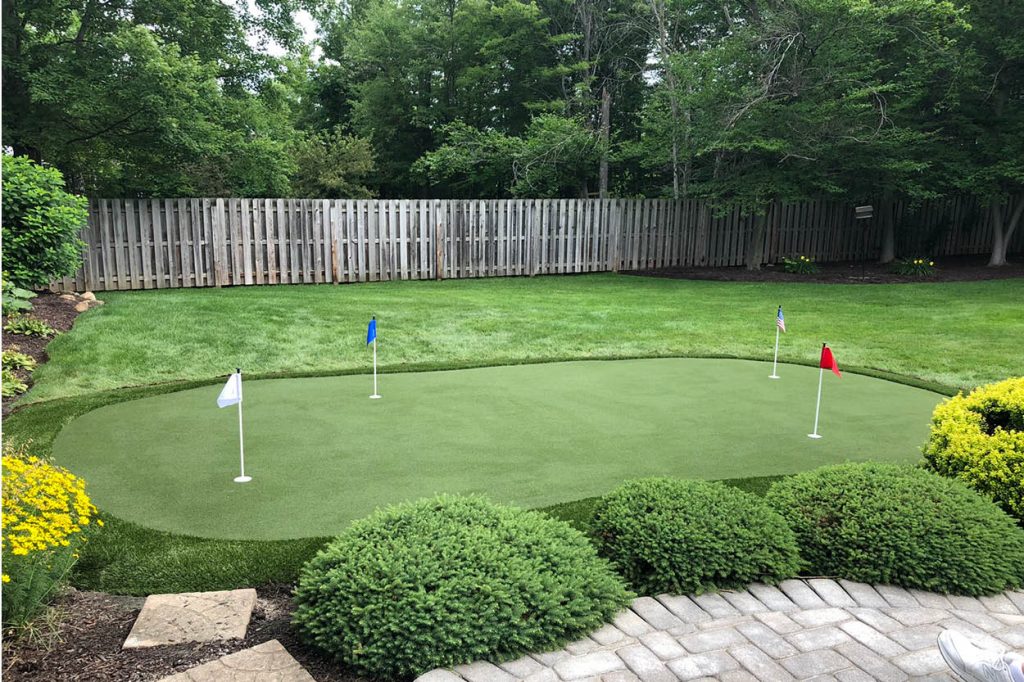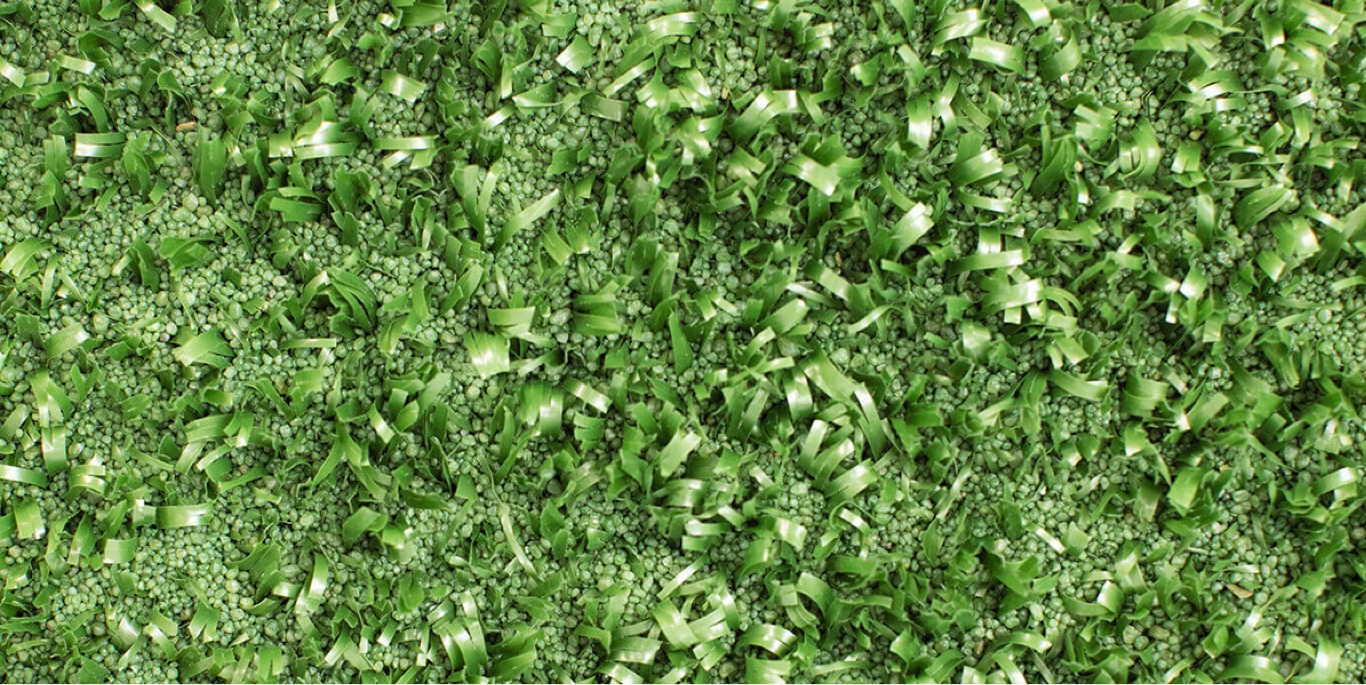
Infill Landscape Blog
Subscribe To Email Updates
Subscribe to our weekly newsletter and we’ll send updates straight to your inbox
Tips for Creating an Amazing Synthetic Turf Putting Green at Home
Don’t miss the first post in this two-part blog post series. The first installment, The Best Artificial Grass for Golf Putting Greens, helps you understand the differences between professional-level and leisure at-home artificial grass putting greens. In this installment, we’re going over how to create the ideal surface for your green, the best ways to combat mold and mildew, how to maintain your putting green, and so much more.
8 Recommendations For Both Professional-Style and Recreational Artificial Turf Putting Green Systems
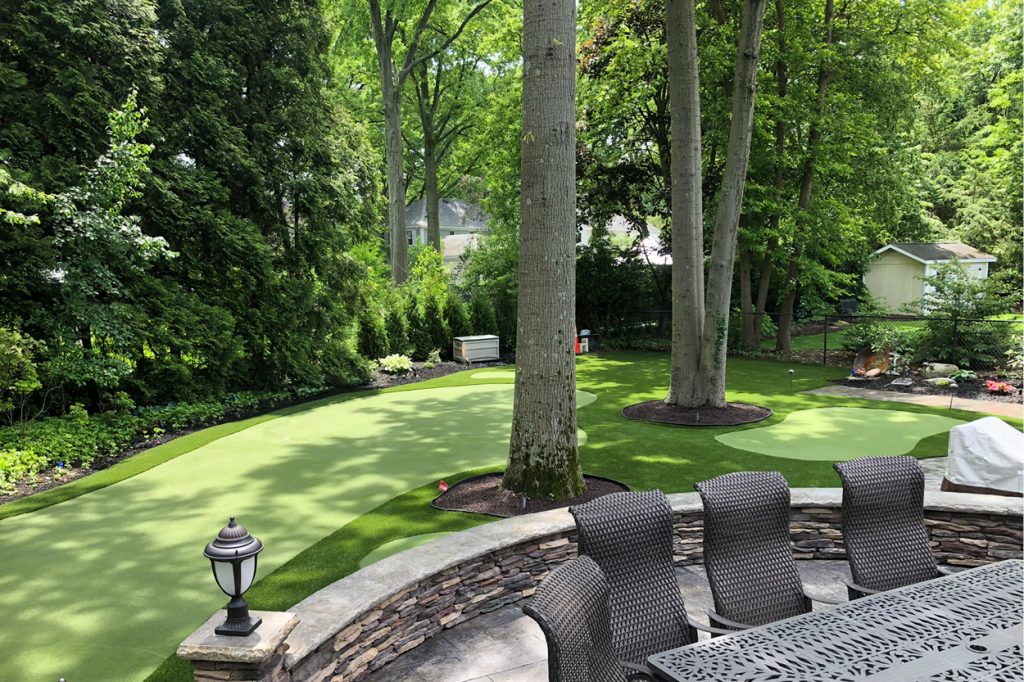
1. Creating a Natural Surface For Synthetic Turf Putting Greens
In order to create the most natural putting green surface, pay close attention to the base under the turf. Shape the putting green surface to incorporate undulations, left and right breaks, and tiers to mimic a natural putting green.
2. Fighting Mold and Mildew on Artificial Turf Putting Greens
Regardless of the type of golf green you install, consistent maintenance is a *must* for optimal performance and lifespan. Putting greens are susceptible to mold and mildew growth since they don’t have the turf backing perforations for drainage that a normal artificial grass turf system has. This means that the moisture levels of putting greens will build up, especially in shaded areas. For this reason, Envirofill is the best turf infill to use in your installation. Envirofill is equipped with Microban, an antimicrobial agent that fights mold and mildew. Raw sand does not have this built-in defense. You will need to treat your turf’s surface promptly if you see mold or mildew.
3. Keeping Surfaces Clear to Keep Your Synthetic Turf Putting Green Pristine
You will want to routinely clear debris. Many people like to place greens around or under trees for a lovely ambiance. If your putting green is installed in a shared area, be wary of tree sap, which will affect the ball speed. Expect a more involved maintenance routine for putting greens near trees.
4. Maintaining Infill Depth on Your Home Putting Green
For optimal playing, check and maintain turf infill depth and keep an extra bag of Envirofill on hand to top off layers when needed. You’ll feel the difference between less than optimal and ideal levels. If you notice the ball slowing down in a particular area, add more infill.
5. Optimal Drainage for Artificial Grass Putting Green Systems
Planning is everything when it comes to ensuring proper drainage of your putting green. Since putting greens require more infill depth and your turf carpet does not have the perforated backing that other synthetic turf systems have, drainage can be more challenging. If your green is not built properly with a slope, water will puddle and create issues. Make sure the base of your green is pitched so that it drains efficiently.
6. Putting Green Installation
The most important part of a putting green is the ballast(infill). Systems with urethane that is repeatedly exposed to UV, heat, and moisture will become wrinkled and could require complete removal. Design a successful artificial turf putting green with substantial ballast; a heavier infill weight on the green doesn’t wrinkle from movement due to expansion and contraction in the elements.
7. Fringe on Artificial Turf Putting Greens
Putting greens usually include a fringe of some kind. Fringe is needed around the green to make them more aesthetically pleasing. Golfers can use the fringe to chip off if a longer chipping surface is preferred. Typically, fringe is 1” -2” of turf connected to the putting green surface. Some people opt for 1” tall and then 2” next to it, which allows for chipping off of the fairway and then the rough.
8. The Typical Lifespan of Artificial Turf Putting Greens
You can expect your green to perform well for 7 to 15 years if well maintained. Envirofill can be reinstalled, but reinstallation will be harder with a sand ballast below Envirofill in your putting green as reclaiming infill after materials have commingled is extremely challenging. Word to the wise: know the warranty offered by your installer and the products installed.
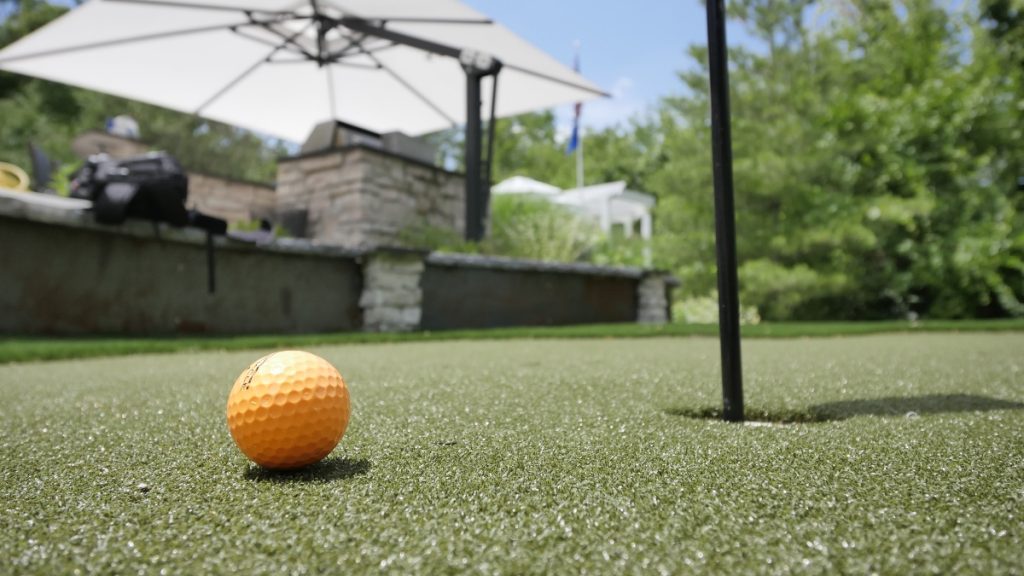
Let’s Get Starting On Designing The Perfect Putting Green for Your Home
Those are the major points to consider when planning to install an at-home artificial grass putting green. Feel free to get in touch with the Motz team if you still have more queries. And for inspiration, check out these blogs written by a homeowner who loves his backyard Envirofill putting green:
Homeowner Review Part 1: What Was it Like to Have Artificial Grass Installed in my Backyard?
Homeowner Review Part 2: How My Life Changed Once I Installed Artificial Grass in My Backyard
“Who would have thought such a simple change to a backyard could make a difference in so many positive ways. It has become the are of the house we use almost as often as the room we watch TV in. We had so many years of an unused backyard – we are making up for that today with the turf!”
-Brad Weiseman, Homeowner & Happy Envirofill Customer
Similar Blogs
